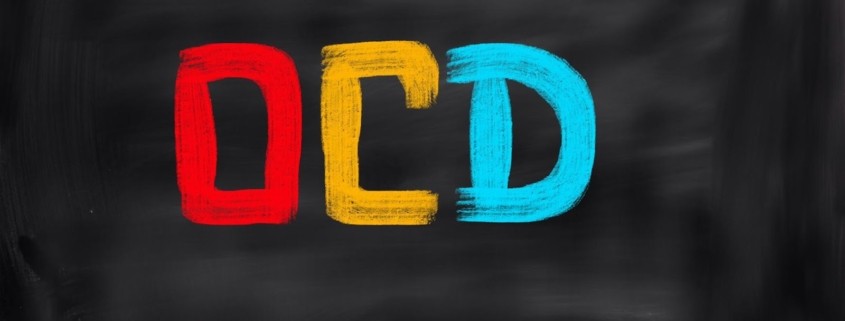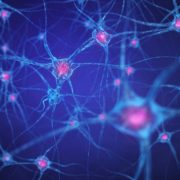What Are the 5 Different Types of OCD?
Obsessive-compulsive disorder, or OCD, is a mental health disorder included under the umbrella of anxiety disorders. OCD is characterized by recurrent thoughts based on fear, worry, or control, referred to as obsessions. These obsessive and irrational thoughts produce intense distress in the individual, leading them to respond by compulsive behaviors that help to mitigate the anxiety caused by the obsessive thoughts.
OCD has the potential to severely disrupt normal daily functioning. The constant cycle of fear-based obsessions followed by compulsive ritualistic behaviors can have repercussions in one’s professional life, their interpersonal relationships, and quality of life. Many times, individuals with OCD will begin to isolate themselves in an effort to avoid any triggers that might occur in public. The individual avoids situations that could potentially cause feelings of embarrassment or humiliation, or that might elicit ridicule by others.
There are 5 different types of OCD that have their own particular features. These include:
- Contamination obsessions with cleaning compulsions. Obsessions around germs and contamination can lead to compulsions of repeated hand washing or cleaning behaviors.
- Harm obsessions with checking compulsions. Driven by overwhelming fear of danger or potential harm to oneself or others, this individual will use compulsive checking rituals to relieve this fear.
- Symmetry obsessions with ordering compulsions. An obsessive need for order and symmetry drive compulsive behaviors that include ordering, arranging, and counting.
- Obsessions that have no visible compulsions. Distorted and irrational thoughts plague this individual, usually involving sexual, violent, or religious themes or fears. Compulsive mental rituals, such as reciting words, prayer, or counting, are not visible to others.
- Hoarding. Obsessive fear around losing important papers or items drives the hoarding of mail, magazines, containers, clothing, and junk mail.
Disorders sometimes included in the OCD category include skin prickling disorder, hair-pulling disorder, and body dysmorphic disorder.
Treatment for OCD
When an individual struggling with OCD initially seeks psychiatric help they will usually be treated with a combination of medication and psychotherapy. Medication will be determined by the severity of symptoms and whether there is a secondary mental health disorder, such as depression. Medications that have been shown to help improve the symptoms of OCD include Prozac, Anafranil, Fluvoxamine, Paxil, and Zoloft. Other psychotropic medications may be prescribed as needed, based on the features of the OCD.
Psychotherapy can be very beneficial for OCD, particularly exposure and response prevention (ERP), which is a type of cognitive behavioral therapy. ERP helps relieve symptoms based on fear by exposing the individual to the source of their fears incrementally. As the object of fear is introduced, the individual is coached how to use coping skills that help reduce the anxiety attached to this trigger. Over time, this therapy can help them better manage their response to the triggers.
TMS Therapy Alternative Treatment for OCD
TMS therapy is a fairly recent entry into treating individuals with mental health disorders. Initially FDA clear in 2008 for the treatment of medication resistant depression, TMS has since been demonstrated to help individuals who also struggle with anxiety disorders, such as OCD. TMS therapy is a neural modulation therapy, using magnetic energy to elicit changes in brain neurotransmitters. TMS requires no sedation and no recovery time, and the therapy sessions are conducted in an office setting.
TMS therapy works by harnessing magnetic fields that are directed through a coil positioned on the individual’s scalp. As the magnetic pulses penetrate the scalp and brain tissue they will induce electrical currents. These currents target specific regions of the brain depending on the specific features of the depression and/or OCD.
During the 40-minute sessions the patient is wide awake and experiences a light tapping sensation and sound. TMS is well tolerated, with only minor side effects reported, such as some scalp irritation or headache. In the event of these effects, it has been found that they will resolve spontaneously over the course of treatment.
TMS therapy is usually prescribed for 4-6 weeks, five sessions per week. Generally, after about two weeks the patient will begin to feel better as OCD symptoms begin to diminish in severity. TMS therapy can be prescribed as a stand alone intervention or as one that is used in conjunction with traditional treatment methods.
Anew Era TMS & Psychiatry a leader in the field of TMS Therapy
Anew Era TMS & Psychiatry specializes in providing TMS therapy in Orange County, California. TMS therapy is an alternative treatment for individuals whose OCD symptoms have not been adequately managed using conventional medication and psychotherapy. TMS therapy is an excellent adjunctive therapeutic intervention, potentially augmenting the treatment effects of standard OCD treatment protocols. For more information about they types of OCD and whether you are a candidate for TMS therapy, please contact Anew Era TMS & Psychiatry today at (888) 503-1549.











